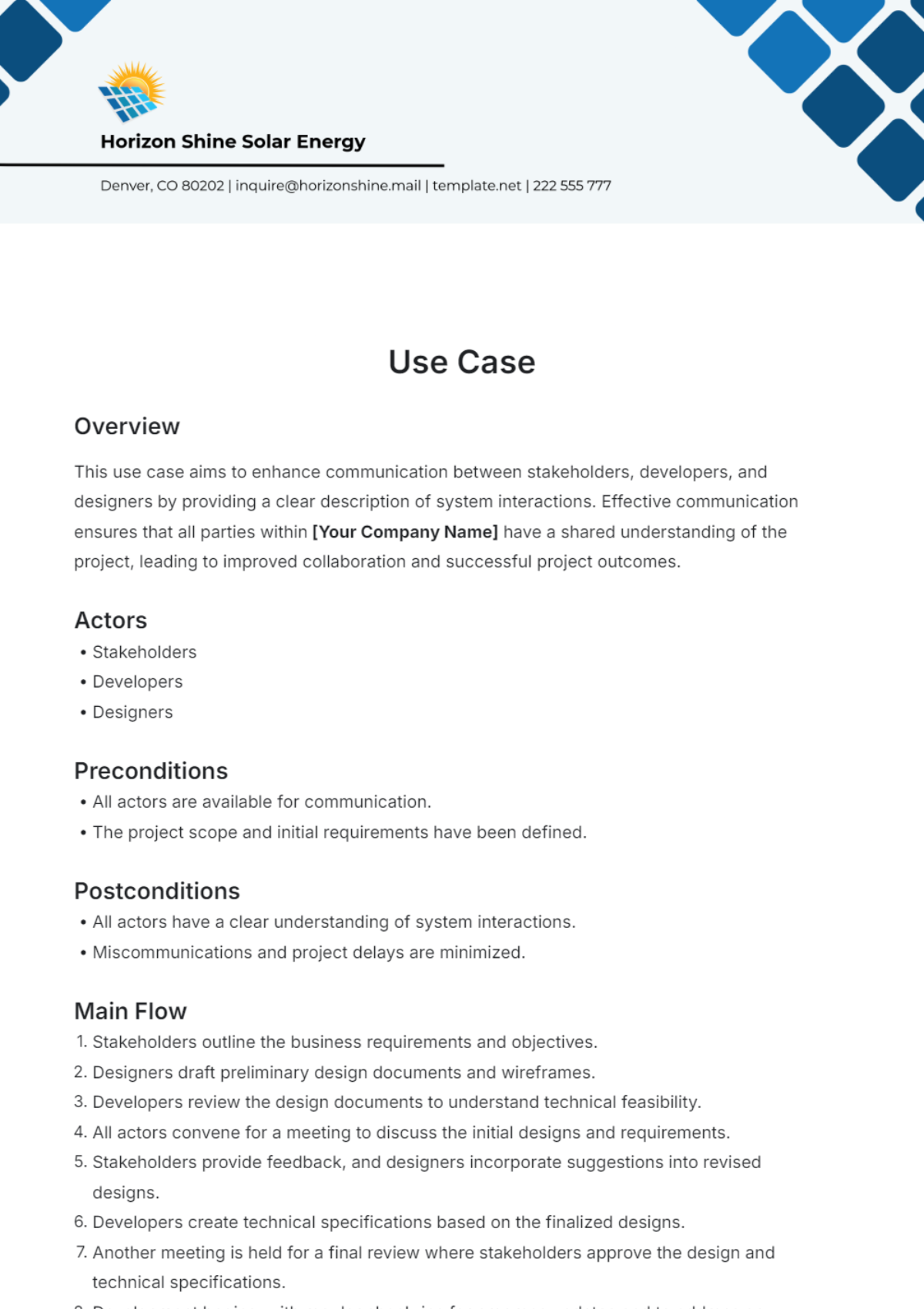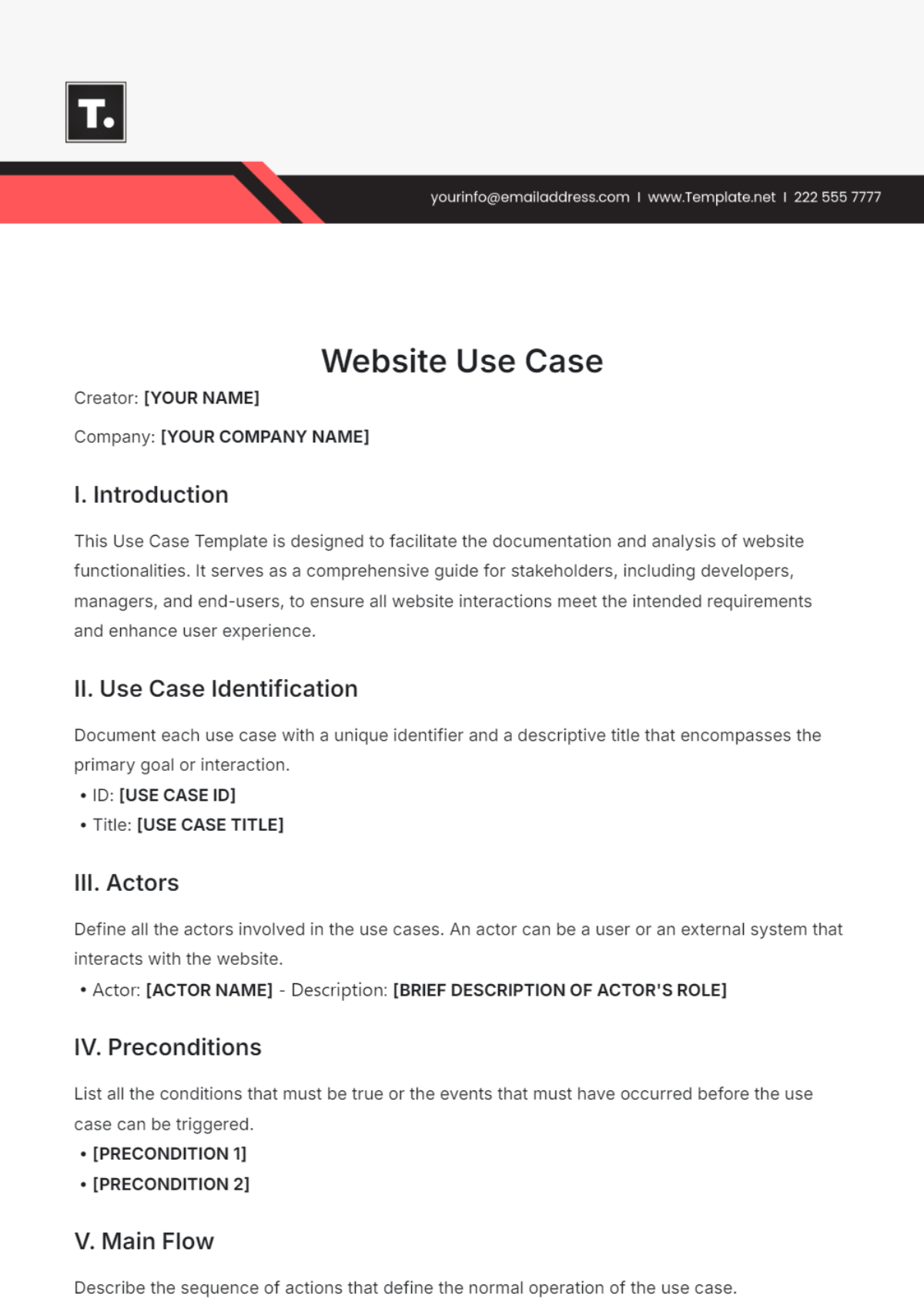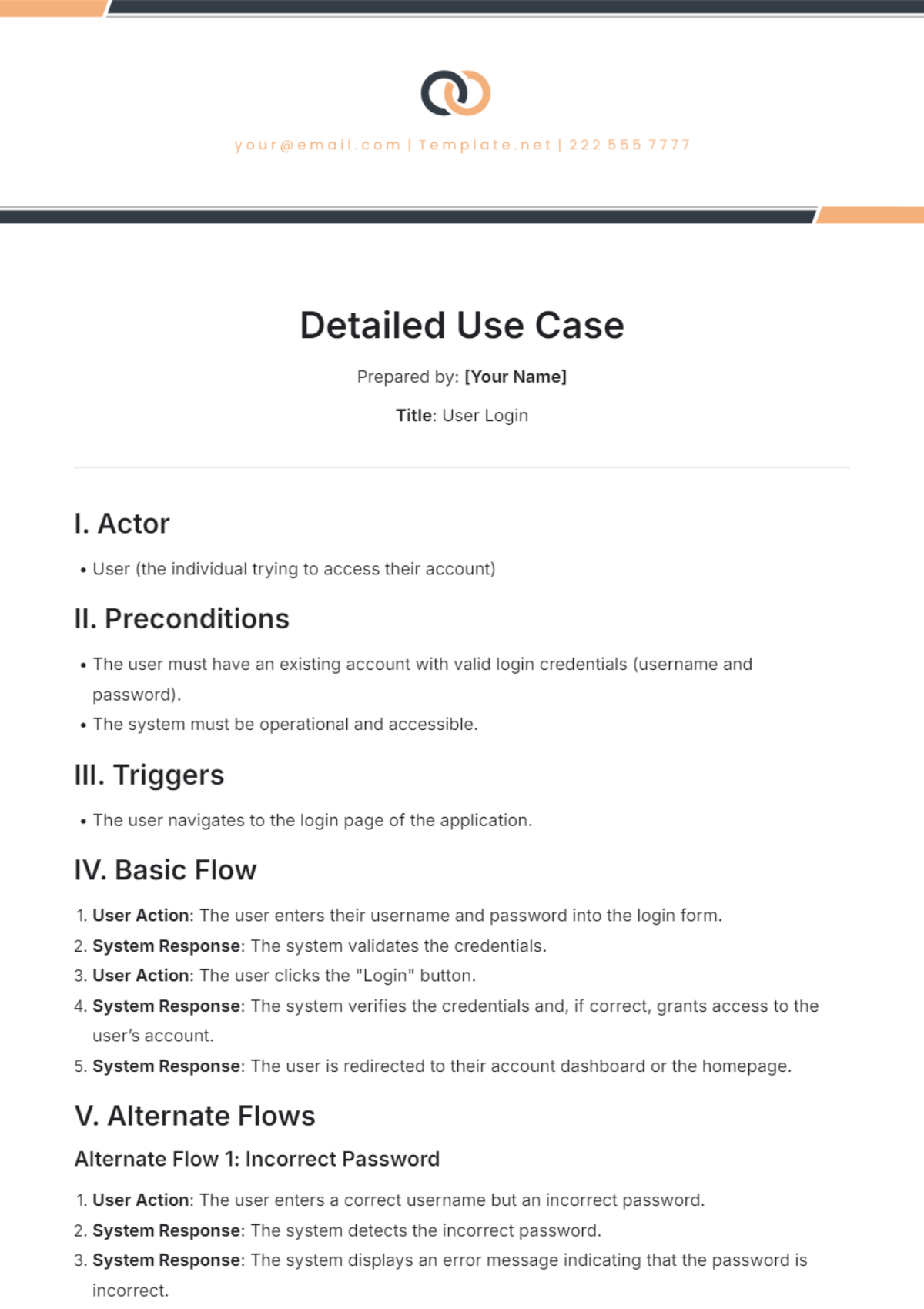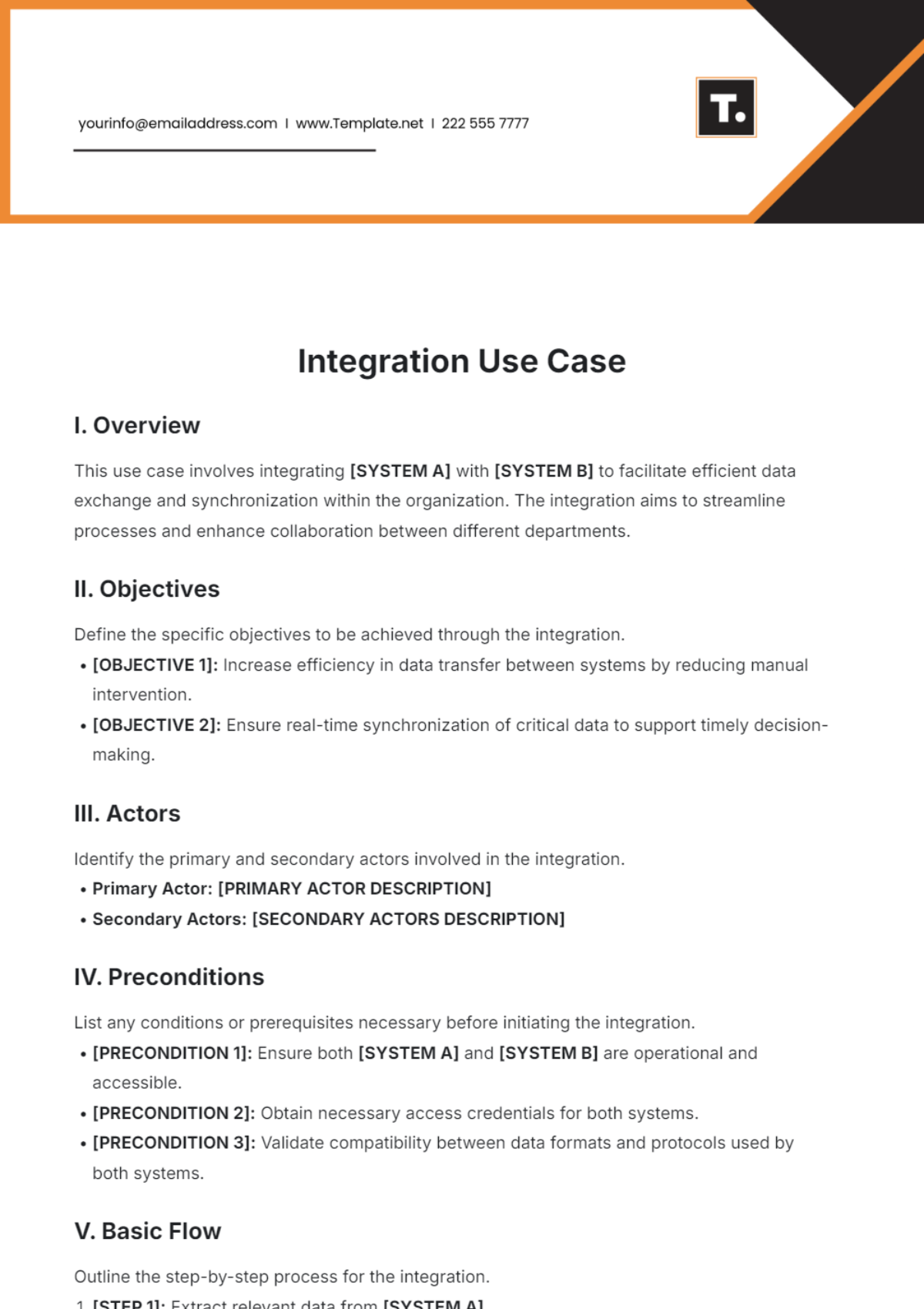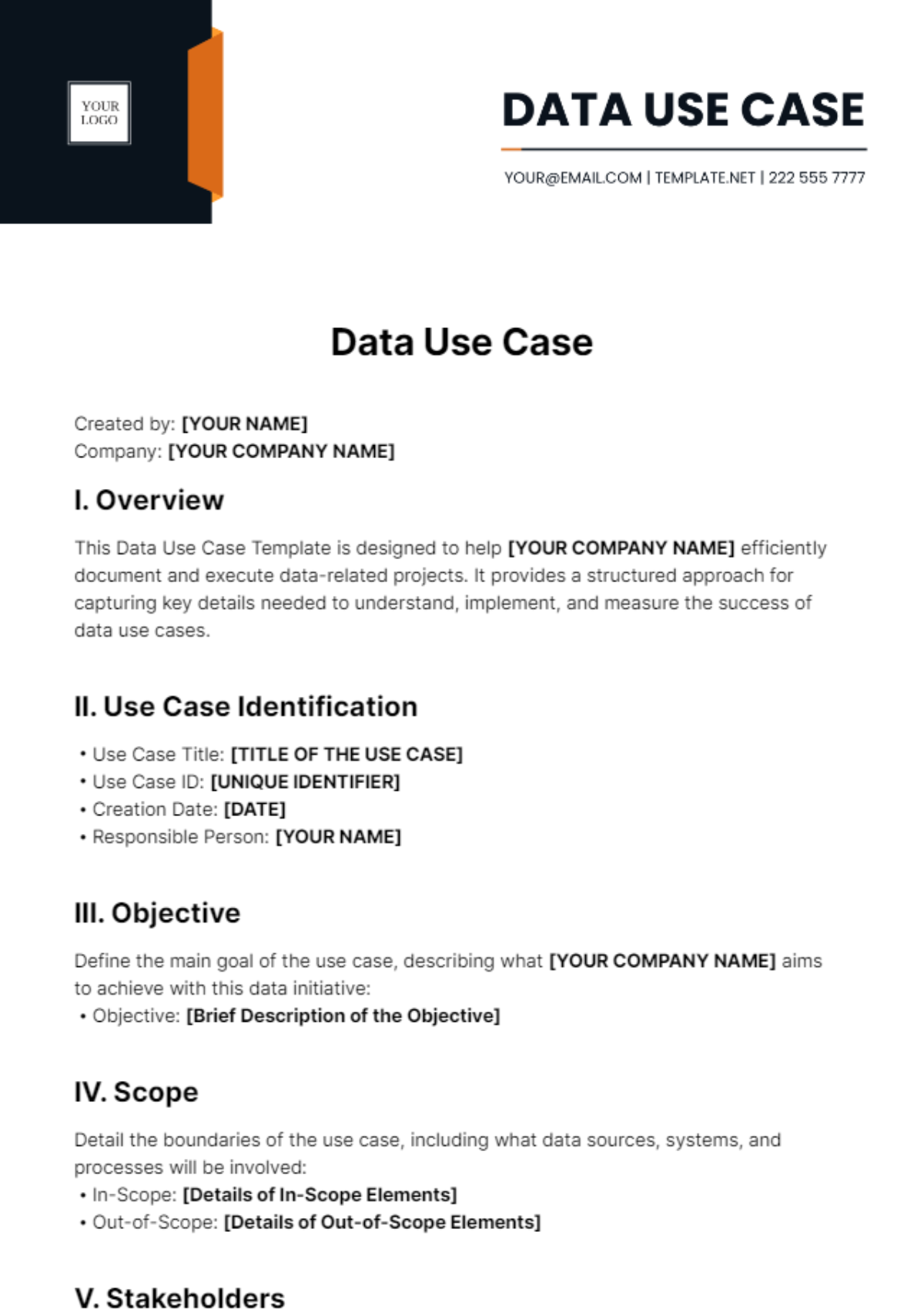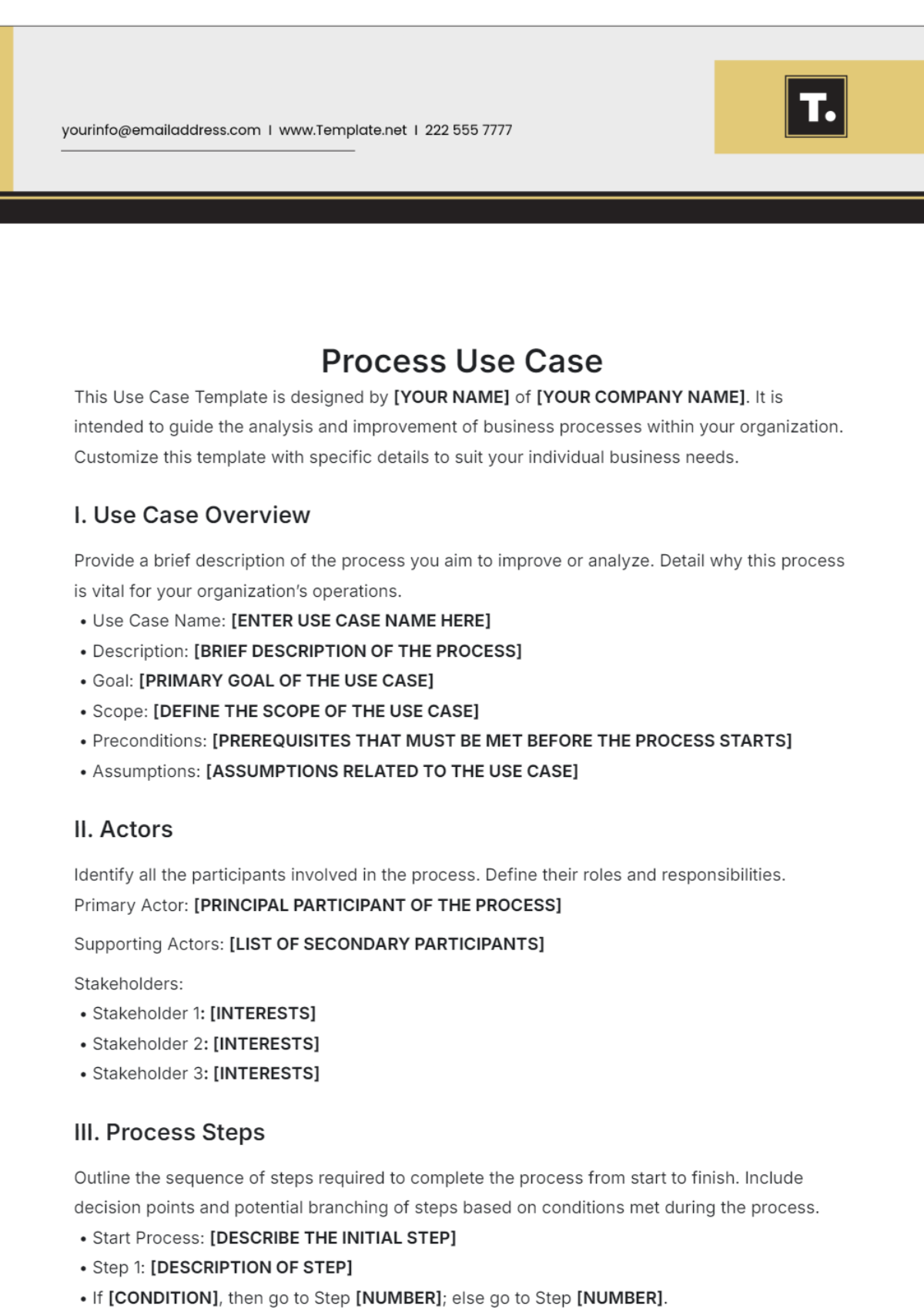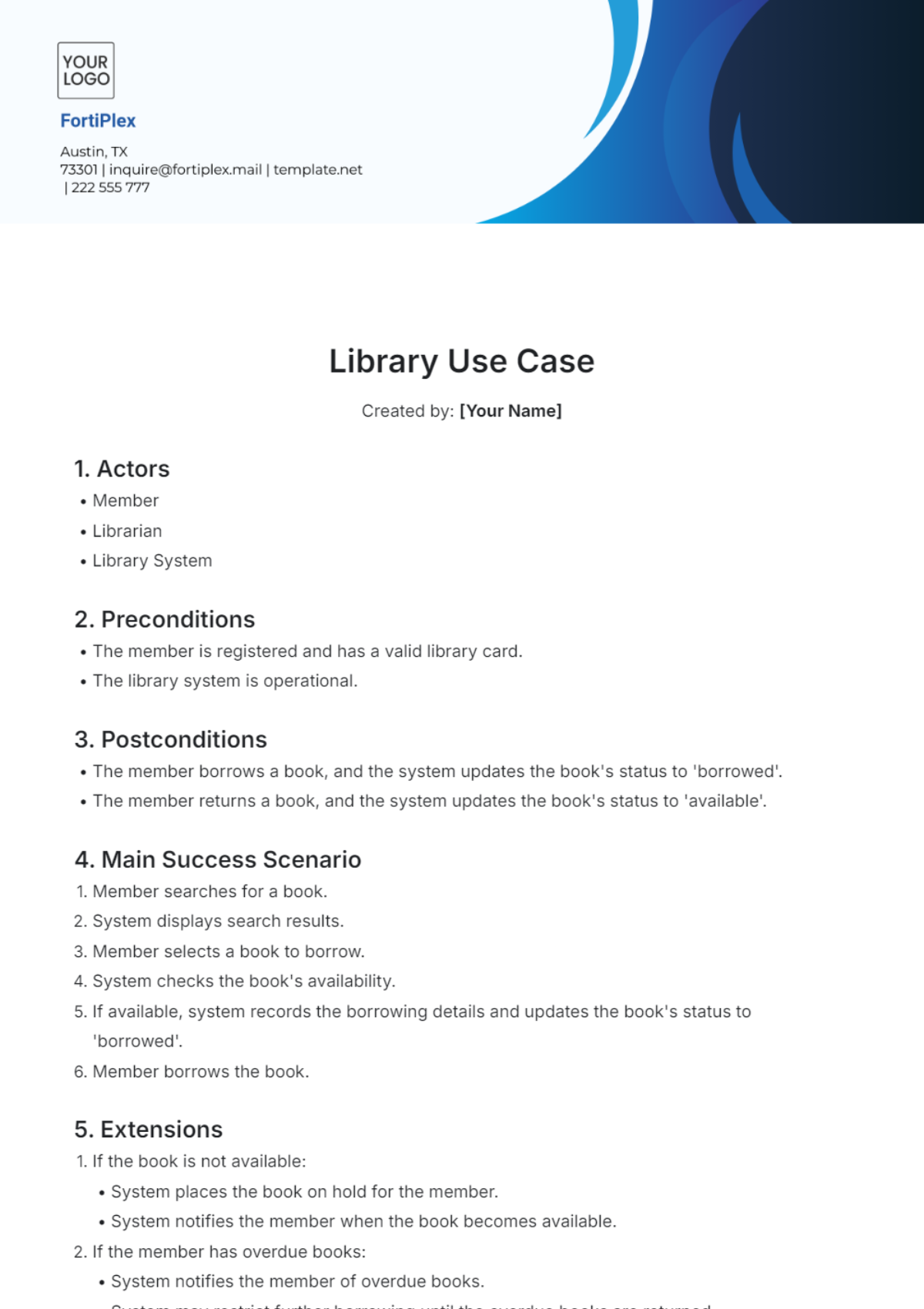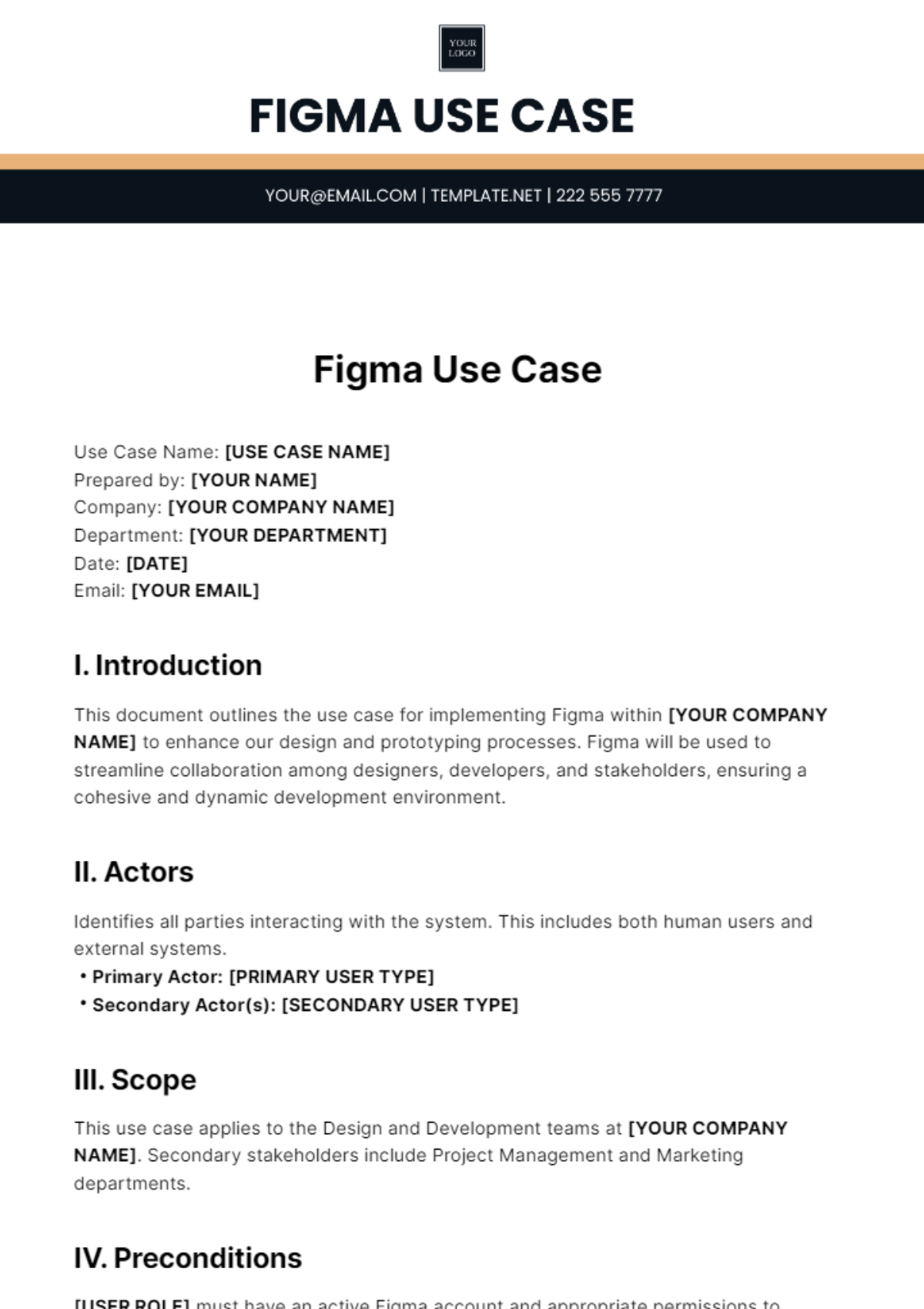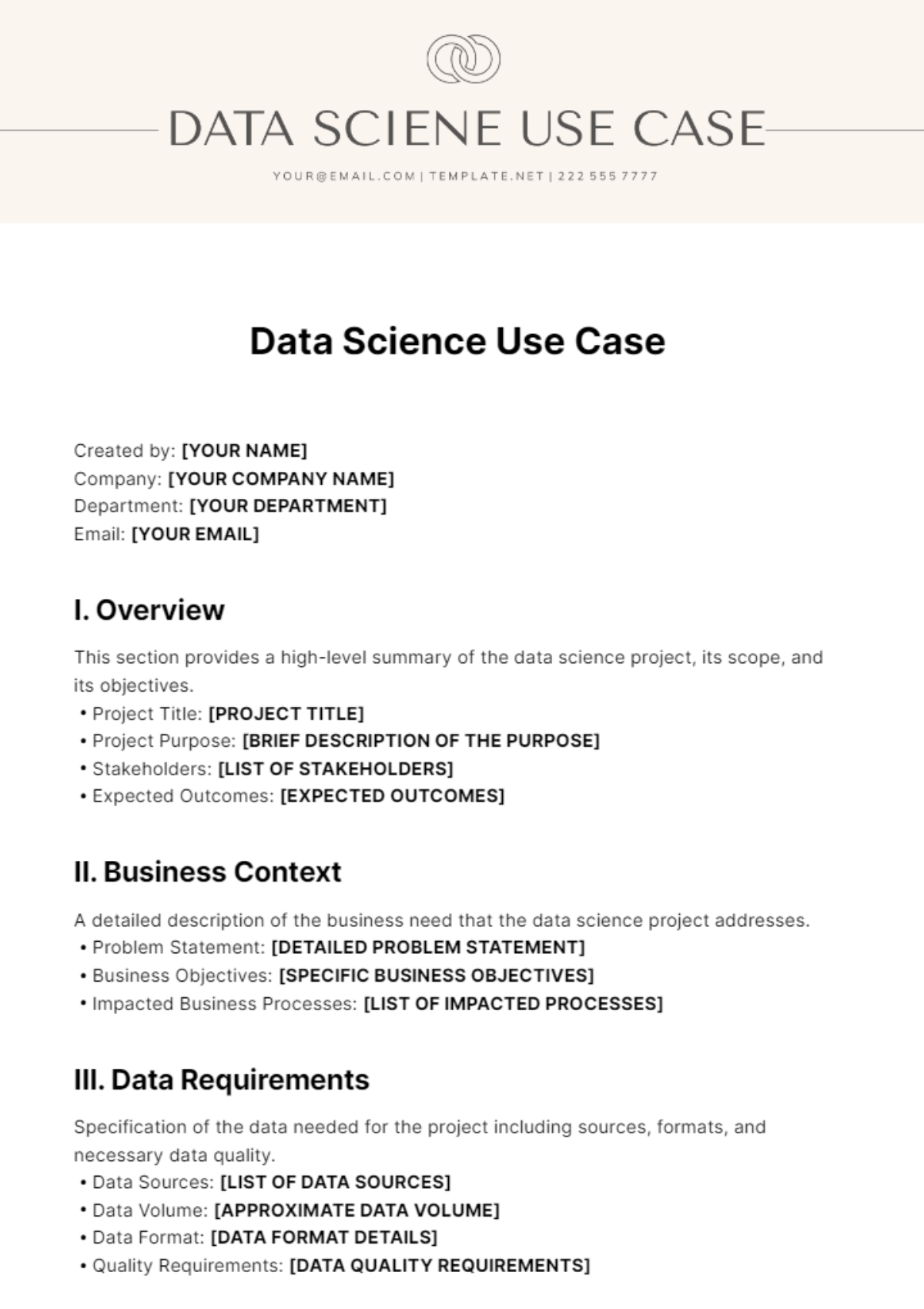Use Case
1. Overview
This use case aims to define and clarify the functional requirements of a system from a user's perspective. It ensures a mutual understanding among stakeholders and provides a detailed reference for the development team within [Your Company Name].
2. Primary Actor
System Analyst
Supporting Actors
End User
Project Manager
Developer
3. Preconditions
The project has been initiated and scoped.
Preliminary requirements have been gathered from stakeholders.
4. Postconditions
Documented and validated functional requirements.
Approval of requirements by stakeholders.
5. Basic Flow
The System Analyst schedules a requirements gathering session with stakeholders.
During the session, the System Analyst explains the purpose and scope of the system.
Stakeholders discuss their needs and expectations from the system.
The System Analyst records all functional requirements mentioned by stakeholders.
After the session, the System Analyst compiles and categorizes the requirements.
The compiled requirements document is then reviewed by the stakeholders for accuracy and completeness.
Once reviewed, the document is approved by the Project Manager and stakeholders.
6. Alternative Flows
If Requirements are Incomplete
The System Analyst schedules follow-up sessions to gather additional information.
The incomplete requirements are discussed and clarified with stakeholders.
Exception Flows
If Stakeholders Disagree on Requirements
The System Analyst identifies the conflicting requirements.
A separate meeting is arranged with the conflicting parties to resolve the issues.
The agreed-upon requirements are then documented and reviewed again.
7. Requirements Specification
ID | Description | Priority | Status |
|---|---|---|---|
REQ-001 | User Login Functionality | High | Approved |
REQ-002 | Data Encryption | Medium | Pending |
REQ-003 | Real-time Notifications | Low | Draft |
Notes
Ensure all stakeholders are present in the requirements gathering sessions.
Use collaborative tools for real-time documentation and updates.
Review the requirements periodically to keep them aligned with the project scope.
